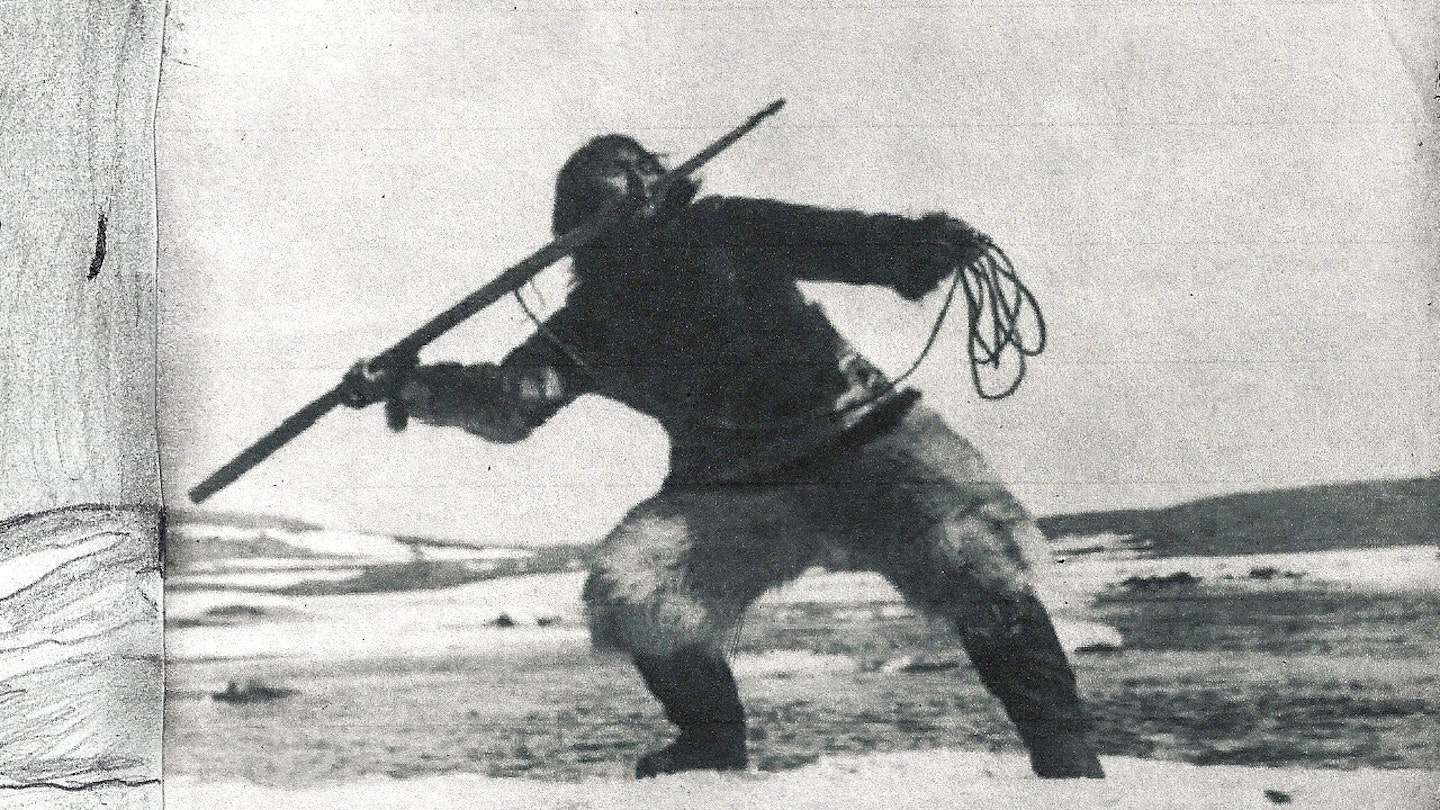Robert Flaherty first started shooting film on two trips to the Belcher Islands in the 1910s, during which he conceived the idea of making a `scenic' about an Eskimo's daily life. However, it wasn't until 1920 that fur trapper Thierry Mallet provided funding for the year-long expedition.
Armed with two Akely cameras, whose gyro-motion tripods permitted smooth panning and tilting, Flaherty began shooting with a walrus hunt and screened the footage (which he developed in a homemade lab) for the Inuits to ensure they became active partners in his project. Indeed, by the time Flaherty left the peninsula, some of the locals had begun working as his technicians, one even fixing a broken stills camera.
However, Flaherty's relationship with his subject didn't impress some of those who first saw the feature in 1922. The fact that he had dressed Nanook and his family in long-discarded clothing and filmed them inside a bigger than usual igloo (a decision necessitated solely by technical demands) prompted some to denounce the picture as a phony and the criticism was even more hostile when a sound version was released in 1947.
Flaherty may not yet have been the most accomplished film-maker and the edit achieved with Charles Gelb might have been confusing in places. But his creative treatment of reality chimed in entirely with John Grierson's concept of documentary cinema and Sergei Eisenstein considered Nanook to be the single biggest influence on the Soviet film revolution, on account of its pioneering reliance on the content and juxtaposition of images to forge an idea rather than the linear linkage of narrative events.
Flaherty consciously selected his cast and suggested episodes to convey the harshness of Nanook's struggle with his forbidding environment. But rather than breaking the rules of the still-undefined documentary tradition, Flaherty worked according to the principles of Inuit art, by which the spirit of an artefact emerges during its creation and not as the result of some preconceived design. Consequently, this remains a remarkable piece of film-making and humanist anthropology, whose influence recurs in the likes of The Story of the Weeping Camel (2003).
